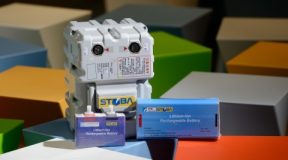A team of Berkeley Lab researchers led by Gao Liu has developed an innovative approach to improve the adhesion of anode laminate to copper current collectors in lithium ion batteries. This nanotechnology directly addresses delamination of graphite anode material from the collectors, a common result of cyclical swelling during charge / recharge operations and a major cause of shortened battery life. Delamination becomes even more problematic with advanced anode materials such as silicon or tin.
The research team developed a simple chemical treatment for the thin-film copper surface that produces nanofibers on the metal surface. While appearing to be smooth under optical magnification, in fact the treated material has nanoscale ridges that increase the surface area and strengthen the van der Waals force, the same molecular bonding that the Gecko lizard exploits to climb walls or hang seemingly effortlessly from ceilings. The nanofibers raised on the copper surface more than double the strength of adhesion between the copper collector and the anode material.
Alternate methods such as copper roughening (1-100 micron features) increase the mechanical interlock between the copper and anode laminate, but promote corrosion. Highly adhesive binders are also used to address the delamination problem, but these materials may degrade performance and tend to swell during charging cycles, limiting battery life. The Berkeley Lab technology overcomes these limitations to advance lithium ion battery solutions.








